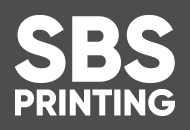Congratulations, you have finished your dissertation or thesis! The next step is to get it printed so that you can proudly hand it in to your professor. But wait, there are a few things you need to know before you do that. In this blog post, we’ll discuss the different printing options available to you and the different paper types and binding options. We will also give you some tips on how to save money on printing your dissertation or thesis. So read on for all the information you need to make the best decision for your project!
What are the printing options available for a dissertation?
After months of hard work and research, it’s finally time to print your dissertation. But with so many printing options available, it can be overwhelming to choose the right one. Fear not, we’ve got you covered!
The three main areas to consider are:
- Black and white or colour printing
- Type of paper used
- Binding options
Black and white or colour printing?
The decision to get a dissertation printed in colour or black and white comes down to personal preference and the requirements of your university or program. Some universities may require certain sections or diagrams to be in colour, while others may only accept black and white printing.
If you include colour charts, graphs, or photos critical to your work, it may be best to print in colour to ensure their clarity and accuracy. If your university does not require colour printing and you don’t have any essential colour elements in your dissertation, black and white printing may be more cost-effective and practical.
Types of paper to choose
The best paper to print a dissertation is typically a high-quality, acid-free, archival-grade paper. The archival-grade paper has a higher cotton content and is typically thicker and more durable than regular printing paper. The acid-free paper contains neutral or basic pH levels, which can help to prevent yellowing or deterioration over time.
What options are there for dissertation binding?
There are several options for dissertation binding, depending on your preference and budget. Here are some of the most common options:
- Hardcover binding: This is the most common option for dissertation binding. It provides a sturdy, durable cover and spine that can withstand frequent use and handling.
- Softcover binding: Softcover binding, or “perfect binding,” is a more affordable option but may not be as durable as hardcover binding. It is typically used for shorter documents or presentations.
- Spiral binding: Spiral binding is a popular choice for dissertations that must lay flat when open or easily flipped through. It is less expensive than traditional binding and can be customised with various cover options and colours.
- Thermal binding: Thermal binding uses heat to bind your pages with a glue strip attached to the spine. It is a quick and easy option that can be completed in minutes.
Ultimately, the choice of binding will depend on your budget, the dissertation length, and preference. It’s also important to check with your university or program for any specific binding requirements they may have.
See more about binding options for your dissertation here.
Getting help with your dissertation printing
There are a few choices involved with printing your dissertation or thesis. You can also get expert help with them, especially if you are attending the University of Greenwich. Call into our store or reach out via our website for personalised advice on your big final project!

